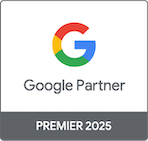
Google Ads headline character limit: Write better PPC Ads that maximize clicks
Abisola Tanzako | Aug 13, 2025

Table of Contents
- Google Ads headline character limit explained
- Why the Google Ads headline character limit matters
- Tips for writing high-performing headlines under 30 characters
- Google Ads headline best practices
- How character limits impact ad performance and CTR
- Examples of high-performing Google Ads headlines
- Key considerations for writing high-impact Google Ads headlines
- Tips for mastering Google Ad copy
- Tip 1: Match search intent
- Tip 2: Use emojis and symbols effectively (Display Ads Only)
- Tip 3: Utilize dynamic keyword insertion (DKI)
- Case study: Mapplinks boosts E-commerce revenue with conciseness in Google Ads headlines
- Mastering Google Ads headline limits for maximum impact
- FAQs
Ads that follow best-practice formatting see up to 25% higher CTR (Google, 2023). The Google Ads headline character limit is a technical requirement and a crucial foundation of ad performance.
Headlines are your brand’s first impression in search results, so they are an integral component of any pay-per-click (PPC) strategy. This guide covers headline limits, best practices, and proven formatting tips to help your ads stand out.
Google Ads headline character limit explained
Google Ads allows advertisers to create text ads that appear on Google’s search results and display network. Such ads consist of a series of crucial components:
- Headlines: Up to 3, each with a 30-character limit
- Descriptions: Up to 2, each with 90 characters
- Display URL paths: Optional, helps users see where they will be taken
- Ad extensions: Strongly recommended but optional to enhance visibility
Although you can write three headlines (90 characters total), Google will not always display all three, especially on mobile. To be most effective, place your top priority messaging in Headline 1 and Headline 2.
Why the Google Ads headline character limit matters
Google Ads headlines are the first and typically the most crucial thing users see when your ad appears in search results. They play a massive role in how your ad performs by influencing:
- Click-through rate (CTR), whether or not users click on your ad
- Relevance: how well your ad aligns with the user’s search intent
- Quality Score, your ad rank, and cost-per-click (CPC)
If your headlines exceed Google’s 30-character limit, they can be shortened, which may result in incomplete messaging.
This can negatively impact readability, dilute your brand, and reduce conversion odds, ultimately affecting your campaign success and ROI.
Tips for writing high-performing headlines under 30 characters
Here is a brief overview of each component’s character limit in an average Google Search ad:
- Headline 1: 30 characters
- Headline 2: 30 characters
- Headline 3: 30 characters (optional)
- Description 1: 90 characters
- Description 2: 90 characters
- Display URL Path 1: 15 characters
- Display URL Path 2: 15 characters
Tip: Although you may use the maximum character allowance, it does not necessarily follow that you should.
Briefer, punchier headlines often prove more effective by being quicker to read and more impactful, especially on mobile.
Google Ads headline best practices
The best practices include:
1. Prioritize your value proposition early: Put the most important content (your USP, promo, or main keyword) in Headline 1 or 2 upfront so that it displays on all devices. Example:
- Good: “50% Off Organic Coffee | Free Shipping”
- Bad: “Browse Our Collection | Save on Coffee”
2. Use power words and numbers: Terms like “free,” “now,” “limited,” and “save” create a sense of rush. Numbers, especially discounts or digits, directly capture attention. Example:
- “Save 30% Today | Ends Soon”
3. Use keywords strategically: Include your primary keyword in Headline 1 or 2 to match users’ search. This helps improve your Quality Score and makes your ad look more relevant.
Google may also use bold keywords in search results, making your ad stand out and attracting more clicks. Example:
- Bidding for “best wireless headphones
- “Best Wireless Headphones | Up to 40% Off Now”
4. Avoid repeating between headlines: Each headline must add value to your ad. Avoid repeating yourself, and avoid wasting character space. Example:
- Good: “Eco-Friendly Detergent | Cleans Better | Subscribe & Save”
- Bad: “Cleans Clothes Well | Great at Cleaning | Amazing Cleaner”
5. Test, test, test: Use Responsive Search Ads (RSAs) to test as many as 15 headlines, allowing Google to optimize for the most productive combinations.
However, make sure every headline is standalone and will be understandable in different combinations.
How character limits impact ad performance and CTR
Even when your headlines are within 30 characters, they may still be shortened in specific actual display contexts. This is especially common on mobile devices, search engine result pages (SERPs) with lots of ad extensions displayed, or small placements such as Google Maps.
If headlines are shortened, key messaging is lost, which may lower engagement and suppress click-through rates. To lower this risk:
- Place the most important words at the beginning of your headline
- Use short phrases or fragments instead of sentences
- Preview your ads in Google Ads Editor or within the platform to ensure proper display on all devices.
Examples of high-performing Google Ads headlines
Here are some compelling headline examples that stay within character limits and encourage user action:
- Promote a Sale: “Flash Sale—60% Off”
- Build Trust: “Rated #1 by Users”
- Lead Generation: “Get a Free Quote”
- E-commerce Offer: “Free Shipping on $50+”
- SaaS Product Promotion: “Try CRM Free”
Key considerations for writing high-impact Google Ads headlines
Before launching your ad campaign, use the following checklist:
- Character limit: Are all headlines 30 characters or less?
- Keyword placement: Are my key keywords included in Headline 1 or 2?
- Unique messaging: Does each headline introduce new, informative content?
- Clear call to action: Are my CTAs strong, clear, and actionable?
- Ad preview: Have I used Google’s ad preview feature to review how headlines display?
- Mobile optimization: Is my copy mobile-optimized, scannable, and brief?
Tips for mastering Google Ad copy
The tips include:
Tip 1: Match search intent
Effective ads tell users what they want. Check your keyword’s intent: informational, transactional, or navigational, and craft headlines accordingly. Example:
- If your keyword is “buy dog food online,” make the ecommerce CTA a priority:
- “Shop Dog Food Online | Fast, Free Delivery”
Tip 2: Use emojis and symbols effectively (Display Ads Only)
While prohibited under Search Ads, emojis and special characters can be used in Display campaigns or Performance Max, which emphasize visual display.
Tip 3: Utilize dynamic keyword insertion (DKI)
DKI automatically inserts search words into your headline, adding relevance, but use them sparingly, not to create awkward phrasing or shortening.
Case study: Mapplinks boosts E-commerce revenue with conciseness in Google Ads headlines
Mapplinks collaborated with a U.S. fashion brand to optimize its online revenue through Google Ads. By writing headlines in an optimal 30-character limit for Google, they remained relevant and clear across all devices.
This strategic process led to a whopping increase in monthly revenue from $14,347 to $114,188 for 198 days. In addition, Return on Ad Spend (ROAS) also rose from 214% to 239%, while Cost Per Acquisition (CPA) decreased from $31.24 to $28.15.
This is an example of the impact of short, keyworded headlines in improving ad performance and ROI.
Mastering Google Ads headline limits for maximum impact
Writing a good Google Ad headline with tight character limits is intimidating, but it is a technique that can take your campaign to new heights. Only 30 characters per headline, and every word matters.
By keeping first the relevance of your keywords, the clarity of expression, emotional stimuli, and a call to action, not only do you adhere to Google’s formatting guidelines, but you are more likely to have more click-throughs, better Quality Scores, and ultimately, more ROI.
Keep testing headline combinations, stay updated on platform changes, and use features like ad previews to make your ads look great on every screen.
Do not forget: concise, pertinent, and deliberate headlines not only conform to Google Ads requirements; they are your key to capturing user interest in a crowded online environment.
FAQs
Q. 1 Is it possible to exceed 30 characters in Google Ads headlines?
No. Each headline field has a hard 30-character limit. Google Ads will not let you publish ads with longer headlines.
Q. 2 Do all three headlines always appear?
No. Headline 3 can be omitted and is not always visible in all ads or on all devices, specifically mobile. Use priority content in Headlines 1 and 2.
Q. 3 Can I utilize punctuation or special symbols?
Yes, but minimally. Excessive punctuation can degrade ad quality. Avoid non-standard symbols that are not rendered on all devices.





